Peru 10 – Lago Titicaca (Part 1)
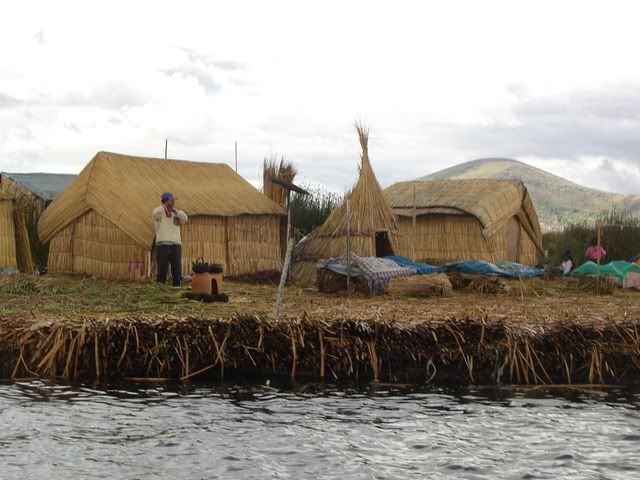
The Uros Islands, Lake Titicaca, Peru

A month or so ago a fellow traveler actually asked me if Lake Titicaca is an actual place…I guess because the name is weird? I’m not sure really, but I can assure you that Lago Titicaca is indeed a real place…and a really interesting place at that. Straddling the border of Bolivia and Peru, Lake Titicaca is the largest lake by volume of water in South America as well as the highest commercially navigable lake in the world at an altitude of 3,812 meters (12,507 feet). The lake is fed by both rivers and melting glaciers and is home to 41 different islands…including the very interesting manmade Uros which are floating islands made of reeds (that you see above in the picture).
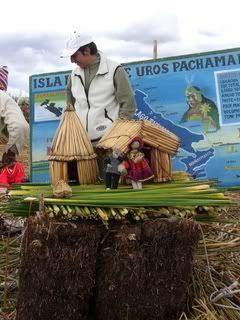
Demonstration on how the islands are formed
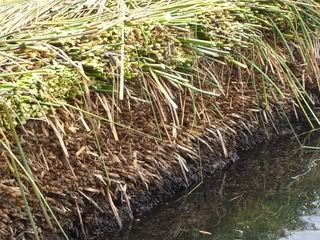
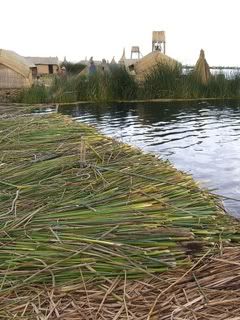
Green reeds are the newer layer, brown reeds the older layer

The Uros Islands
Yes, man-made islands. Very strange indeed. The islands are constructed with a type of
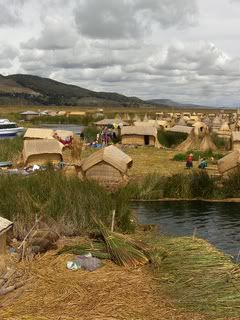
reed known as tortora which they also use to make boats, houses and consume as food. Originally the floating islands were developed as a defensive maneuver as the islands can be moved (and consequently need to be anchored during storms on the lake) at will. The first picture above shows the demonstration they gave us on how the islands are constructed…there is about a meter of soil that holds the roots of the tortora plant, then a layer of reeds is set atop the soil, then another layer of reeds is set in the opposite direction and finally a third set of reeds is set in the final layer. Every couple of months a new layer of reeds needs to be added and you can see in the second and third pictures the different layers of the reeds. Walking on the islands is somewhat strange as well as you sort of feel like you’re walking on a gigantic sponge. The reed houses and boats each last about a year before they need to be replaced.
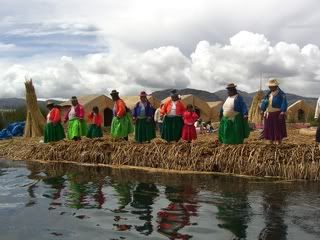
Farewell dance by Uros-dwellers

Example of boat made of reeds
There are currently a few hundred people still living on the islands…about 10 families on each of the larger islands and 1-2 families only on some of the smaller islands. Little kids go to a floating school in the islands but the older kids row themselves to nearby Puno on the mainland every day for school. The Uros people depend largely on fishing and the selling of their handicrafts to tourists for their incomes.
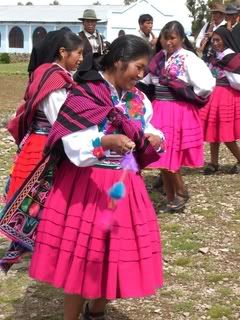
After the Uros islands we headed to another island known as Amantani. This island is about 6 square miles and houses 800 families in 6 villages. There are no hotels or restaurants on Amanatani (and consequently, no jobs) so tourists stay overnight with local families in their houses…eating traditional food and existing in a world where there is no electricity and the women still cook on a hearth on their dirt floors. I’ve included a picture below of the house I stayed in…my room was on the upper floor on the left. The building to the right is the kitchen/dining room area where I also took a picture of the cooking area so you can see how primitive things still are. Apparently there is a generator on the island that used to provide electricity for 3 hours a day…unfortunately the fuel required to run the generator got too expensive so now everyone relies on candles and battery-powered flashlights as well as solar-powered radios, etc.
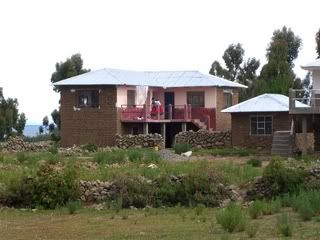
My house on Amantani
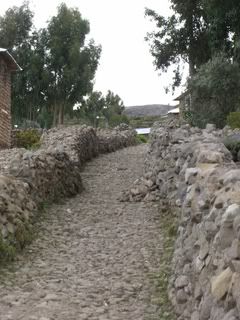
Village pathway
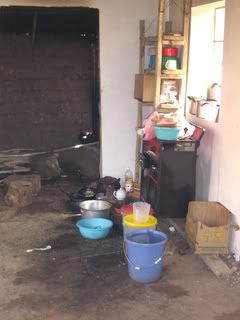
Kitchen of Amantani family

Kitchen of Amantani family
The woman I stayed with was Mariluz who is 29 and just recently married so no kids yet. At the time I stayed with her her husband was off in Puno getting supplies so it was just she and I muddling though our Spanish…since Spanish is a second language for both of us…her first being Quechua. The pictures below include a welcome-to-the-island dance as well as a weaving demonstration. The pictures of the three women demonstrate the different way their clothing is worn depending on marital and social status. The woman on the left is married, the woman in the middle is single and the older woman on the right is the wife of one of the island’s leaders.
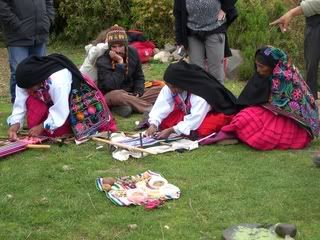
Amantani weaving demonstration

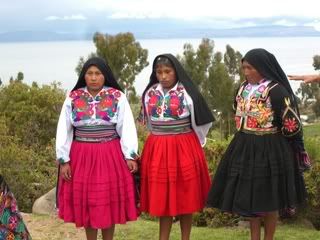
In the afternoon we headed up on a hike to the highest point on the island at about 4,200 meters where a temple could be found…as well as the much needed warmth provided by hot tea and fresh donuts made by a local family. After dinner it was off to a traditional dance party with our local hosts…pictures of which will follow in Part 2 of Lake Titicaca. Until then…
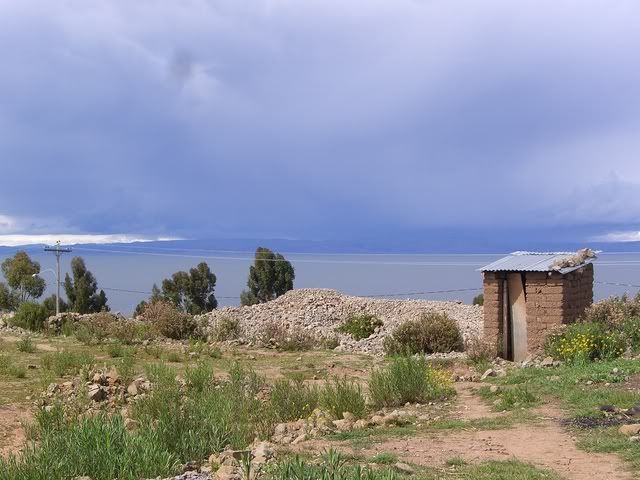
View of Lake Titicaca from my bedroom window
Tags: 9 - Peru, Amantani, Lake Titicaca, Puno

January 17th, 2008 at 5:48 pm
Oh my goodness! What a different world! I love all of the bright colors.